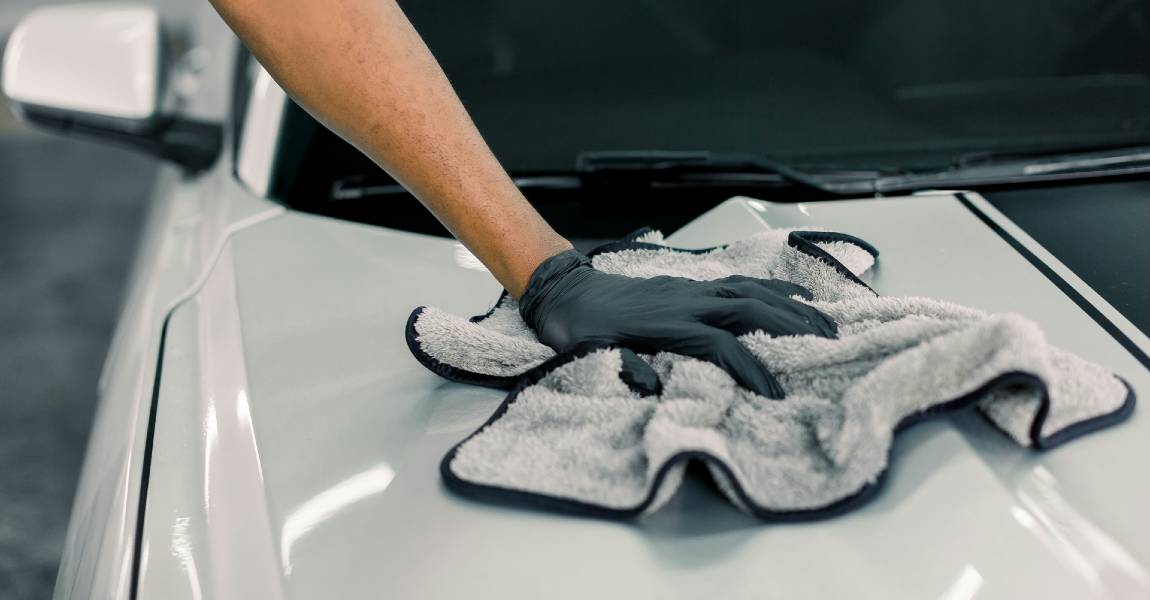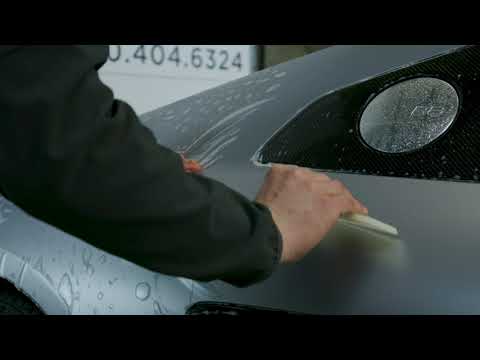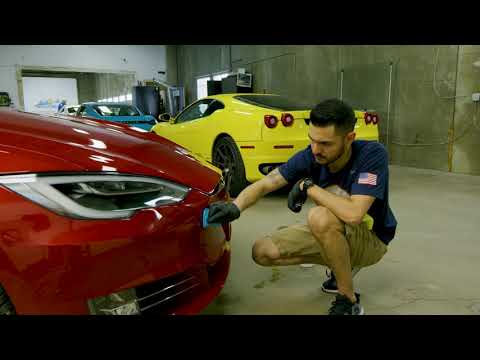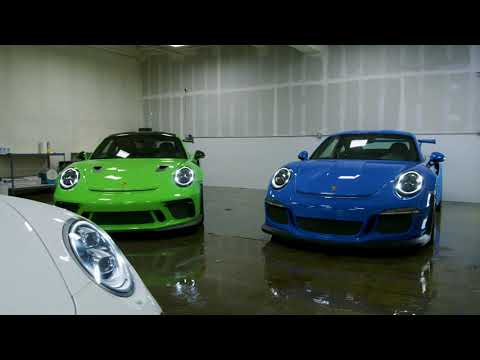Ceramic coating has revolutionized the automotive care industry, providing a durable layer of protection that keeps vehicles looking pristine for years. It offers a high-gloss finish, repels water and dirt, and shields paint from harmful UV rays. However, despite its benefits, applying ceramic coating can be challenging. Due to its cost-effectiveness, DIY ceramic coating is an attractive alternative to professional services, but achieving professional-grade results requires knowledge, preparation, and attention to detail.
This guide will explore 10 common mistakes to avoid in DIY ceramic coating, the importance of prep work, tips for applying ceramic coating effectively, the curing process, and how to extend the lifespan of your coating.

Table Of Contents
- What is Ceramic Coating?
- Why DIY Ceramic Coating?
- The Importance of Prep Work Before Applying Ceramic Coating
- 10 Common Mistakes to Avoid in DIY Ceramic Coating
- Tips for Applying Ceramic Coating
- The Curing Process
- How to Extend the Longevity of Ceramic Coating
- FAQs – Common Mistakes to Avoid in DIY Ceramic Coating
- Conclusion Common Mistakes to Avoid in DIY Ceramic Coating
- Contact Us
What is Ceramic Coating?
Ceramic coating is a liquid polymer applied to a vehicle’s exterior, chemically bonding with the paint to form a protective layer. It differs from waxes and sealants in that it offers semi-permanent protection. The coating shields against UV damage, chemical stains, and scratches while providing a hydrophobic effect, which means water and dirt roll off easily. According to a 2023 industry report, the global ceramic coating market is expected to grow by 7.5% annually, reflecting its increasing popularity among car owners.
Why DIY Ceramic Coating?
DIY ceramic coating allows car enthusiasts to save money while taking control of their vehicle’s appearance. Depending on the vehicle’s size and condition, professional services can range from $500 to over $2,000. By contrast, high-quality DIY ceramic coating kits are available for $50 to $200. But there’s a catch: applying ceramic coating requires patience, precision, and preparation. A single mistake can compromise the coating’s durability and appearance, leading to frustration and additional expenses.
The Importance of Prep Work Before Applying Ceramic Coating
Prep work is arguably the most critical step in ceramic coating application. Skipping or rushing this phase can result in poor adhesion, uneven application, and reduced longevity. Prep work for ceramic car coating involves several stages:
1. Washing and Decontamination
- A thorough wash removes dirt, grime, and surface contaminants. To avoid damaging the paint, use a pH-neutral car shampoo.
- Decontamination with a clay bar removes embedded particles like tar and iron deposits that a simple wash cannot eliminate. If left untreated, these contaminants can lead to bumps or rough spots in the coating.
2. Paint Correction
- Paint correction is essential to remove swirl marks, scratches, and other imperfections. Ceramic coating enhances the underlying surface, meaning any flaws will become more noticeable if not corrected.
- A 2022 detailing study revealed that 85% of DIY ceramic coating failures stem from improper or skipped paint correction.
3. Isopropyl Alcohol (IPA) Wipe-Down
- An IPA wipe-down removes residual oils and polishing compounds, ensuring a clean and bare surface for the coating to adhere to. This step cannot be skipped, as oils can prevent proper bonding.
Failing to invest time in prep work is like building a house on a shaky foundation—it guarantees disappointment.
10 Common Mistakes to Avoid in DIY Ceramic Coating
Choosing the Wrong Product
Selecting the right ceramic coating product is critical. Products vary in quality, durability, and ease of application. Choose a reputable brand and ensure the product is compatible with your vehicle’s paint type. Cheaper alternatives may lack durability or hydrophobic properties.
Skipping Paint Preparation
Rushing into the application without preparing the surface is the most common mistake. As mentioned earlier, ceramic coating locks in whatever is beneath it. This means dirt, scratches, or imperfections will be sealed under the coating, affecting the final finish.
Applying Too Much Product
Overapplying ceramic coating can lead to streaks, high spots, and a sticky texture. Follow the manufacturer’s guidelines, which typically recommend thin, even layers. A little goes a long way.
Neglecting Test Spot Application
Always test the coating on a small, inconspicuous area before proceeding. This ensures compatibility and gives you a chance to refine your technique without risking the entire vehicle.
Rushing the Application Process
Patience is crucial when applying ceramic coating. Each section of the car should be worked on meticulously, ensuring even coverage. Rushing leads to missed spots, streaks, or improper curing.
Using Inadequate Tools
High-quality tools like microfiber towels, applicators, and lighting are essential. Using old or low-quality materials can result in scratches or uneven application.
Applying in Poor Conditions
Temperature, humidity, and lighting significantly impact the coating process. Ideal conditions are between 60-75°F with low humidity. Avoid outdoor application to prevent contaminants from settling on the surface.
Skipping the Curing Process
Ceramic coating requires 24-48 hours to cure fully. During this time, the vehicle must not come into contact with water, dirt, or dust. A single drop of rain during curing can ruin the coating.
Improper Maintenance
Even after application, ceramic coatings require proper maintenance. Avoid harsh detergents and abrasive sponges. Use pH-neutral shampoos and microfiber towels to preserve the coating’s properties.
Expecting Miracles
While ceramic coating offers excellent protection, it is not a substitute for proper car care. Regular washing and maintenance are still required to keep your vehicle looking its best.

Tips for Applying Ceramic Coating
- Work in Small Sections: Divide your vehicle into manageable sections, such as doors, hood, and roof, to ensure even application.
- Follow the Flash Time: Most ceramic coatings have a “flash time,” indicating when the coating is ready to be wiped off. Look for a rainbow-like effect on the surface.
- Use Quality Lighting: Good lighting helps identify missed spots or streaks during application.
- Keep Tools Clean: Always use clean microfiber towels and applicators to avoid introducing contaminants.
The Curing Process
The curing process is where the ceramic coating bonds to the paint. Here are some tips to ensure successful curing:
- Avoid washing the car for at least seven days.
- Keep the car indoors or under a cover to prevent exposure to rain or dust.
- Avoid touching the surface during the first 24 hours.
How to Extend the Longevity of Ceramic Coating
- Regular Maintenance Washes: Wash your car every two weeks using a pH-neutral shampoo.
- Avoid Automatic Car Washes: These can strip the coating or cause scratches.
- Use a Ceramic Boost Spray: Boost sprays enhance the hydrophobic properties and prolong the coating’s lifespan.
- Avoid Harsh Chemicals: Acidic or alkaline cleaners can degrade the coating prematurely.
A study in 2023 found that regular maintenance extends ceramic coating lifespan by up to 40%, ensuring your investment pays off.
FAQs – Common Mistakes to Avoid in DIY Ceramic Coating
What happens if I skip paint correction before applying ceramic coating?
The coating will seal in all imperfections, making scratches and swirl marks more visible.
How long does ceramic coating last?
A ceramic coating can last 2-5 years, depending on the product and conditions, with proper maintenance.
Can I apply ceramic coating in humid conditions?
High humidity can affect the curing process and lead to uneven application. Always aim for a controlled environment.
What tools are essential for ceramic coating?
You’ll need microfiber towels, an applicator pad, isopropyl alcohol, and a high-quality ceramic coating kit.
Is ceramic coating worth the investment?
Yes, ceramic coating provides long-term protection, reduces maintenance, and enhances your car’s appearance.
How do I remove ceramic coating mistakes?
High spots can be corrected with a polishing compound or re-application of the coating.
What is the most common mistake in DIY ceramic coating application?
The most common mistake in DIY ceramic coating applications is skipping proper surface preparation.
Conclusion Common Mistakes to Avoid in DIY Ceramic Coating
If done correctly, DIY ceramic coating can transform your car’s appearance and protection. By avoiding these common mistakes, investing in thorough prep work, and maintaining the coating properly, you can achieve a professional-grade finish. Remember, patience and attention to detail are your best tools for success.
Contact Us
We’d love to hear from you! Whether you have questions about our services, need a quote, or want to schedule an appointment, our team is here to help.
Colorado Clear Bra
5611 Kendall Court #9
Arvada, CO. 80002
Phone: 720-404-6324
Feel free to contact us via phone or email, and we’ll respond as soon as possible. Alternatively, stop by our location during business hours—we’d be happy to assist you in person!
Your satisfaction and vehicle protection are our top priorities. We look forward to serving you!




